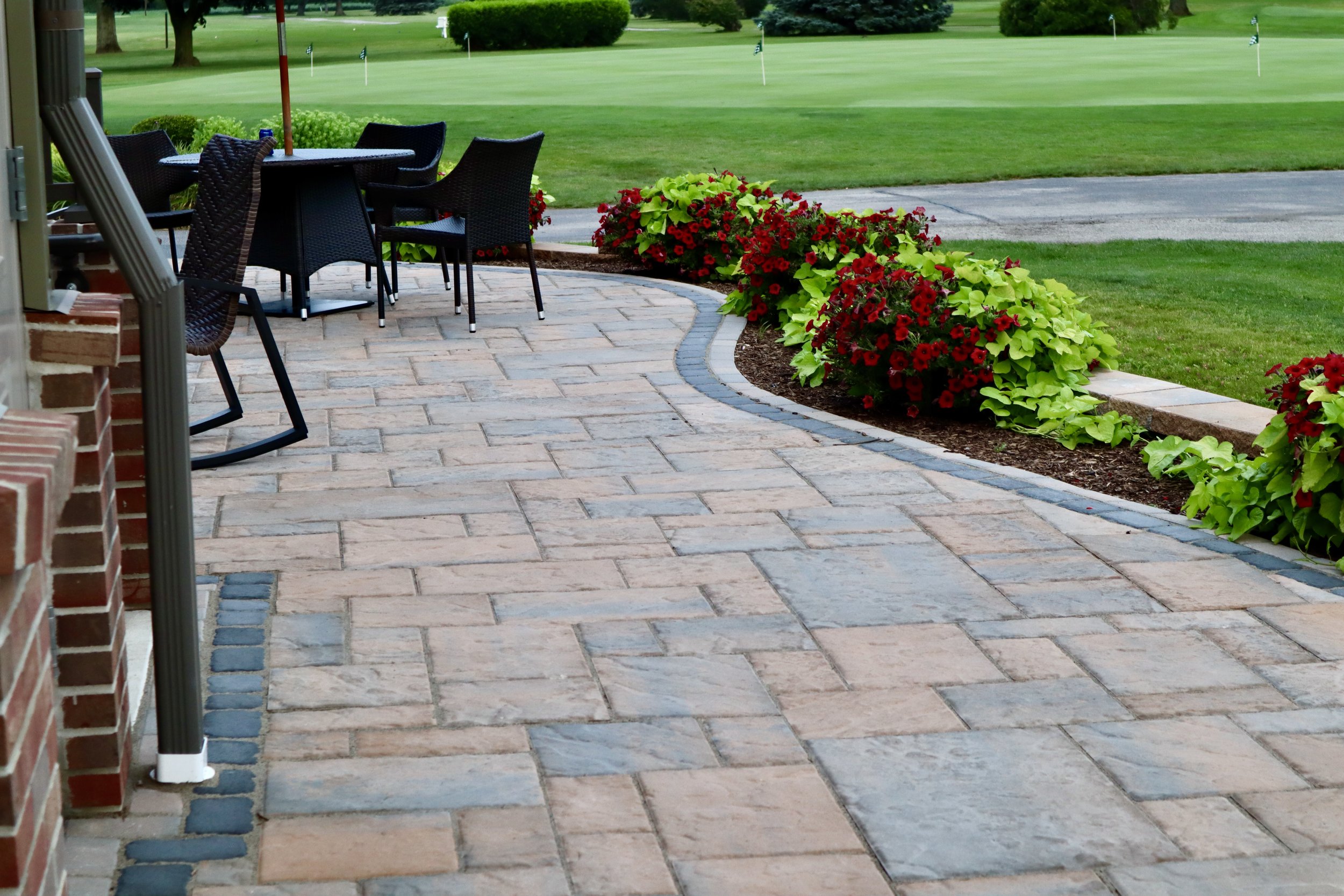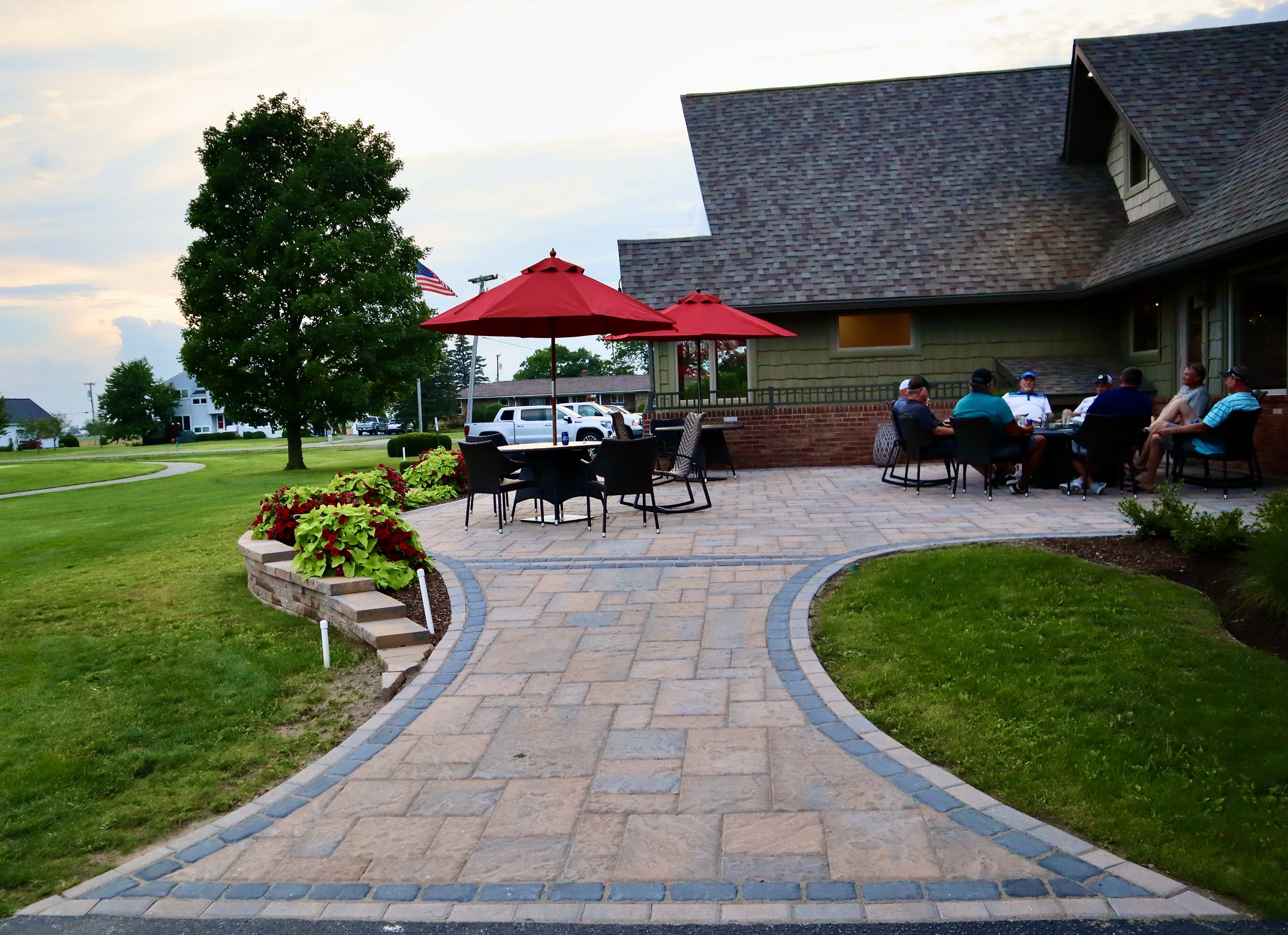Pool Patios
Since 2020 pools have become increasingly popular as people look to spend more time at home and in their own backyards. Whether you’re installing a vinyl pool, a concrete/shotcrete pool or a fiberglass pool the next most important thing is what is going to surround the pool? When getting into a pool project most homeowners don’t realize that a majority of pool companies in the Toledo area don’t come up with a comprehensive design so they are left with sourcing what surrounds the pool. This isn’t a knock on pool companies at all but it is something homeowners should be aware of.
When it comes to surrounding the pool there are typically two options: concrete pavers/slabs or concrete. There is a third option of porcelain pavers but those aren’t all that popular in the Toledo area because they are A) quite expensive and B) are very material and labor intensive to install. So back to our two main options: pavers/slabs or concrete. As a company that installs pavers and slabs we might be biased in our opinion but there are many pros and cons to each pool patio solution.
First, let’s go over concrete as that is what is typically installed in the Toledo market. The main pro for concrete being used instead of pavers is cost. Concrete is typically 10-30% less expensive to install than pavers. Concrete can also be installed a little quicker than pavers as there is less prep work involved and it usually only takes one day to pour an entire pool deck. The main con of concrete, as we have mentioned in previous blog posts, is that there are two types of concrete; cracked and going to crack. If you have a great concrete company install your pool deck they know this and will install control joints as necessary to minimize the cracking and make it so the cracks occur in those joints instead of in the middle of the pool deck. However, when you use a colored concrete or a stamped concrete pattern it makes it more likely that those cracks will occur in undesirable places such as the middle of your patio. Once the concrete cracks it opens the door to water getting underneath your pool deck which in turn causes heaving and settling due to our freeze/thaw cycle in Toledo. Typically when you or your family is running around and enjoying your pool in the brief summer months the last thing you want to worry about is stubbing your toe or tripping over heaved concrete!
This leads us into why we prefer pavers or slabs for pool decks. While they are typically more expensive than concrete, pavers and slabs are proven to stand the test of time. When installed using modern construction techniques, which we also cover in a different blog post, the chances of heaving or settling are much less than a traditional concrete patio. One of the questions we get most frequently when we bring up that concrete is either cracked or going to crack is “Well what happens when of my pavers cracks?” The answer to that is very simple, we remove and replace said paver. The amount of times we have had to do this since we’ve been in business is precisely zero. The second most frequent question regarding the installation of paver is “Well what about the joints? Won’t water get through the joints between the pavers and won’t weeds grow between the joints?” The answer to the first part of the question is that the polymeric sand we use between paver joints is between 95-98% impervious, and that 2-5% of water that could penetrate the joints is mitigated by proper slope and drainage meaning we are incredibly confident that almost no water will penetrate the paver patio and enter the base material. Since we use modern construction methods and an open graded base system we are confident that even if water does penetrate the polymeric sand it will quickly leave the paving system and return to the groundwater table. The answer to the second part of the question is that if polymeric sand is installed correctly there is no void space where weeds will be able to establish a root system and grow within the patio.
Another large pro for a paver patio is the customization aspect. Utilizing different products within the same patio can create different spaces throughout the patio. Whether you have an outdoor dining space or if a space just needs a transition from the patio to the house or the backyard; utilizing a different style or color of paver can create the desired effect. Using inlays can also move people through the space and draw attention to different features such as fire pits, outdoor kitchens, or the entrance to shallow end of the pool or even a ‘walkway’ to the diving board!
Comparing concrete and pavers around a pool is a lot like comparing apples to pinecones because they are drastically different patio options. With all things being equal we will let you make up your own mind on what you use around your pool (obviously 😉), but as a company that specializes in creating custom outdoor living spaces we know that when you choose pavers for your pool patio you will never regret it!





